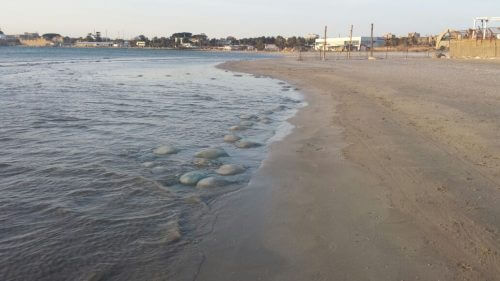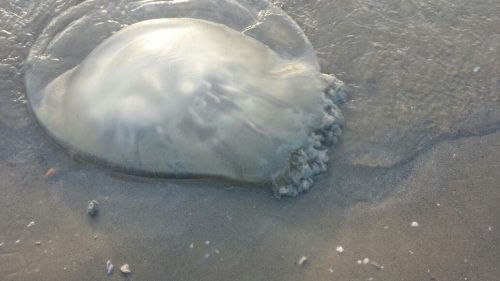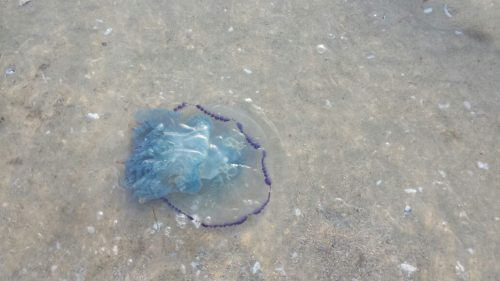According to researchers from the Department of Marine Civilizations at the University of Haifa, the jellyfish come frequently even during the winter, but it is still not clear why there are winters with huge swarms and there are winters with few jellyfish.

A swarm of wandering filamentous jellyfish, some of which are larger than the average size and even reach a diameter of 70 cm or more, has been seen in recent days off the coast of the country. "The jellyfish appeared both in the center and in the south of the country, but most of the reports of dozens and hundreds of jellyfish were in the area of the northern coasts of the country," said Dr. Dror Angel, an expert in marine ecology from the Department of Marine Civilizations at the University of Haifa.
In recent days, more and more reports about the swarm have arrived on the "Jellyfish" website. The purpose of the website established by the researchers of the Department of Marine Civilizations is to monitor and report to the public on the distribution of jellyfish on the beaches, and on the presence of different species of jellyfish in different places along the coasts of the country. The jellyfish arrived in our area even before the storm that was last weekend and as a result of which many of them were washed ashore.

According to the researchers, winter swarms in recent years are not unusual, when even two years ago very large amounts of jellyfish were observed, especially in the north. According to Dr. Angel, the fact that in winter there are almost no bathers in the sea means that we don't always notice them, but researchers still don't know why there are years when the number is even greater than usual.
According to Dr. Dor Adelist from the Department of Maritime Civilizations, based on past data they are expected to remain in our area for a period of between one and three months. He also mentions that throughout 2016 no swarms of jellyfish (similar to the current swarm) arrived on Israel's shores, for the first time since the researchers began documenting the swarms. According to him, the major changes that are taking place in the Mediterranean Sea, led by the expansion of the Suez Canal and the many species that arrived through it, the damming of the Nile, - global and local warming, fishing, development and more - mean that the researchers are still far from observing the behavior of the jellyfish swarms in our region. "The current warming of the Mediterranean Sea, for example, may help certain species of jellyfish in the winter, harm almost all species in the summer and affect the distribution of jellyfish in general in countless indirect ways through the food web. There is no doubt that we still have a lot to research on the subject", said Dr. Edelist.

